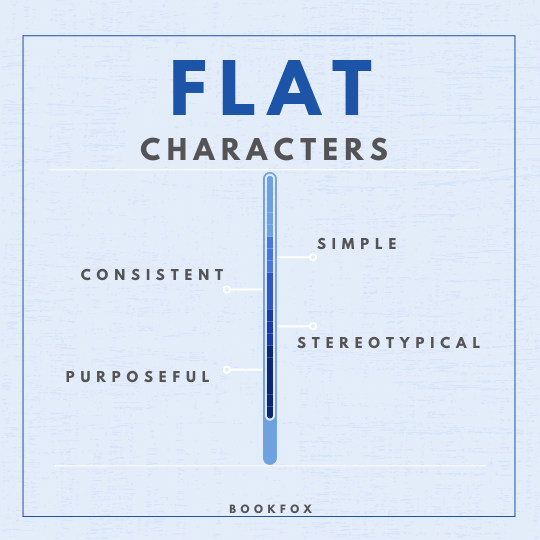
Round and Flat Characters A Guide to Writing Characters Bookfox
In fiction, round characters are lifelike figures with complex, multifaceted personalities. They possess depth and dimension, and often undergo personal development over the course of a story. Round characters are considered an asset to any narrative as they: Make stories more realistic and authentic in their emotion.
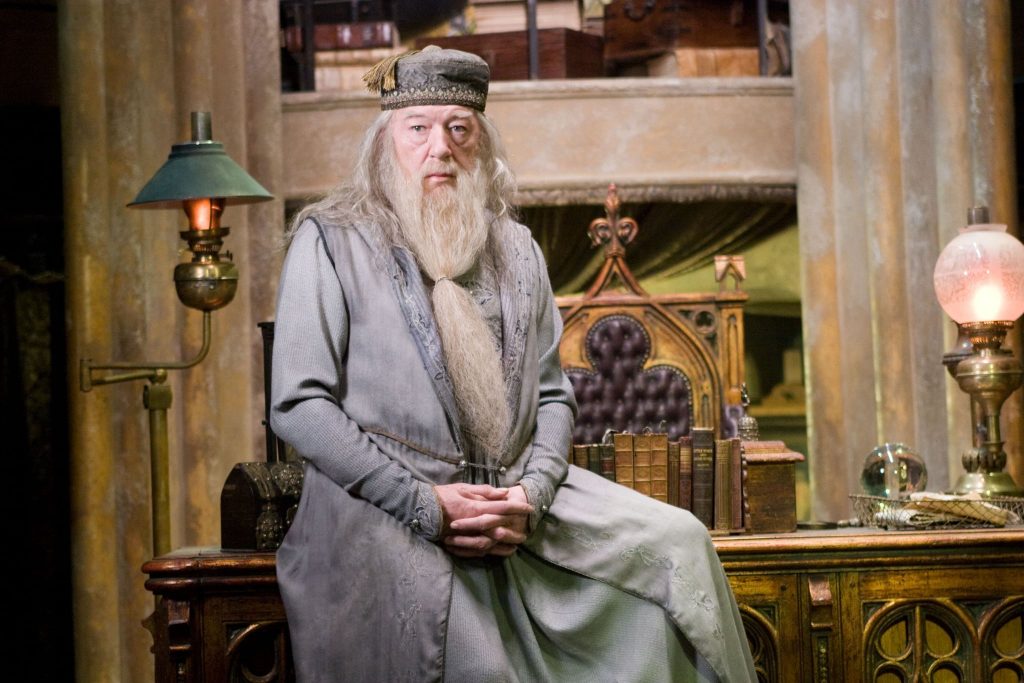
What Is a Round Character? Definition, Examples, and Traits
Definition of Round Character. A round character in a novel, play, or story is a complex personality. Like real people, they have depth in feelings and passions. For instance, in the movie "Shrek," the main character says "'Ogres are like onions," which means that, what appears to them is not the only truth.Rather, there is something more inside them.

"What is a Flat Character vs a Round Character?" A Literary Guide for English Students and
Flat characters are the opposite of round characters, serving a more limited role in storytelling. They are usually minor characters that do not undergo much change or development throughout the course of the narrative. These characters typically lack complexity and are often used to support or contrast the main character's actions and beliefs.
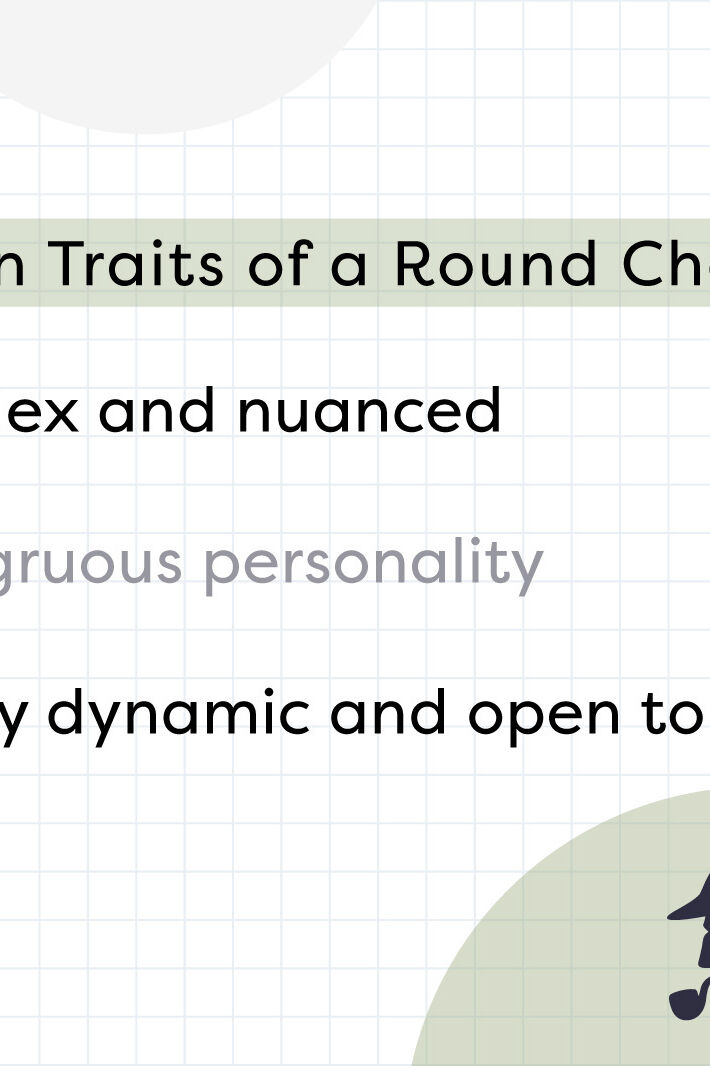
What Is a Round Character? Literary Definition and Examples YourDictionary
A round character is humanized, whether the protagonist, villain, or supporting character. There are countless examples of dynamic characters, but here is a short list to help get your imagination going: Dana, Kindred. Gale, The Hunger Games. Scout, To Kill A Mockingbird. Severus Snape, Harry Potter.

Round character in English literature in Hindi Character types Definition and examples
A character is said to be "round" if they are lifelike or complex. Round characters typically have fully fleshed-out and multi-faceted personalities, backgrounds, desires, and motivations. Jay Gatsby in F. Scott Fitzgerald's The Great Gatsby is a round character. A wealthy man who throws lavish parties for high-society New Yorkers, at first.

Flat Character
Learn about how round characters elicit an emotional response, and discover some of the best examples of them in literature. In order for an audience to connect to a character, the character must first be well-rounded. Learn about how round characters elicit an emotional response, and discover some of the best examples of them in literature.

Premium Vector Round character cartoon style for children's education
A Round Character has a Complex Personality. A round character is one that is completely fleshed out. This requires careful planning on the part of the writer. You must comb through every aspect of their lives, even parts of them that won't be included in your story. They will have in-depth feelings.
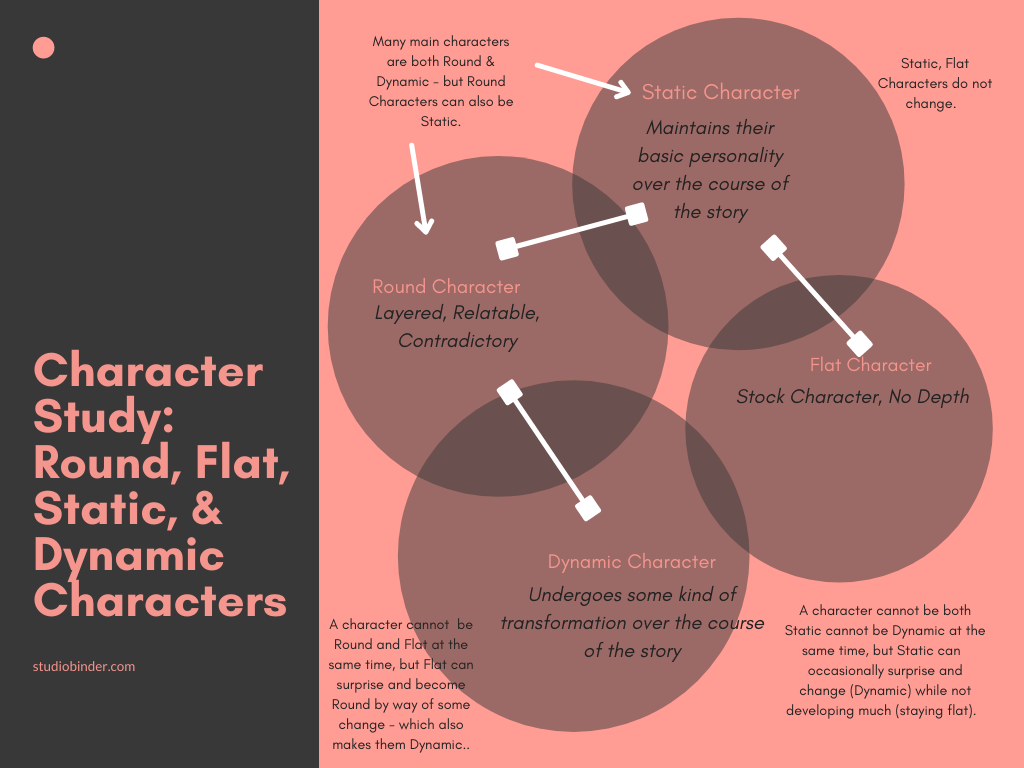
Round vs. Flat Character — The Essential Differences Explained
A round character is a complex, dynamic individual found in a literary work, specifically in narrative fiction. Such characters have depth and nuance, and their thoughts, feelings, and actions evolve as the story progresses. You often see them undergoing change and development, either emotional or intellectual.

Types of Characters Mini Lesson on Seven Types
Round character definition: any character whose depth and complexities are apparent throughout the story. Round characters exhibit the psychological complicatedness that all of us share as human beings. Of course, writing a round character is easier said than done. In order for a fictional human being to reflect the complexities of real world.

What is a Round Character? Explained with Examples in 2022 Literature, Character, Round
Example: In Langston Hughes' short story "Thank you M'am", Mrs. Luella Bates Washington Jones is a round character. She has a well-developed personality; however, she does not undergo any change throughout the course of the story. Jones remains the kind, charitable woman from the start to finish. Whereas the young boy, Roger, would be.

What is a Round Character? Definition, Examples & More! The Art of Narrative
Characters in a novel, short story, play, or film can be either round or flat. A round character is nuanced and well thought-out. They usually play an important role in the story. They are written specifically so audiences can pay attention to them for a specific reason. Flat characters, on the other hand, are more like window dressing. They are two-dimensional and lack nuance. Their purpose.
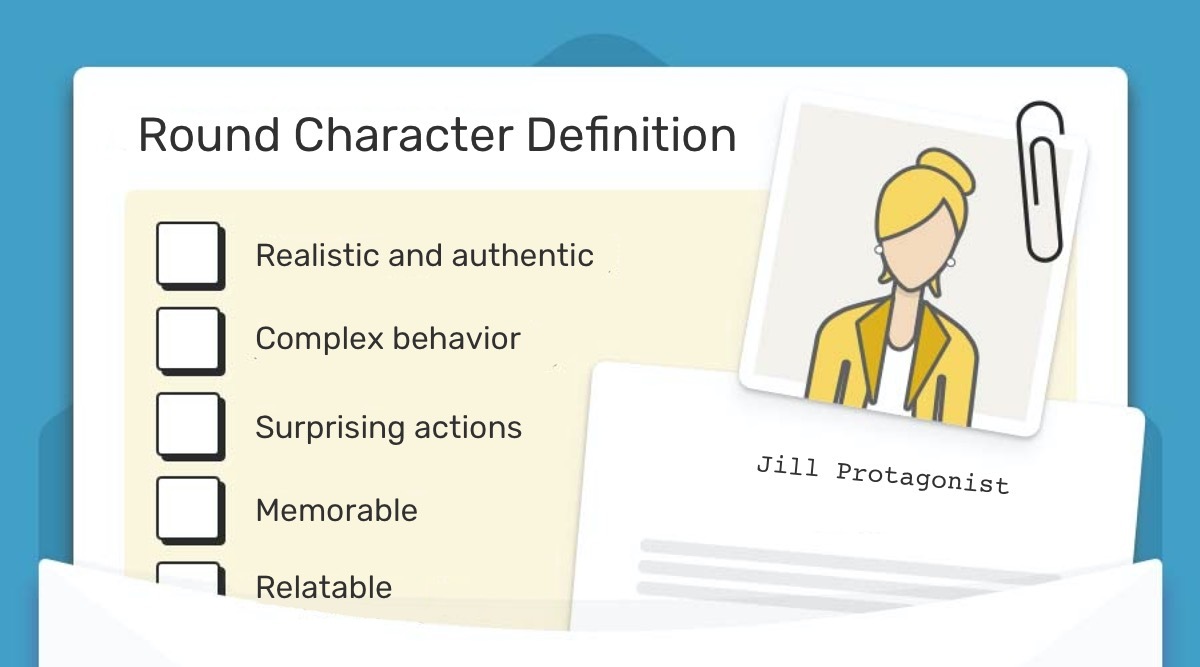
What Is a Round Character? Definition, Examples, and Traits
Vertoont een personage meer dan één aspect, dan ontstaat het begin van de curve naar het round character. Hoe meer aspecten een personage heeft, hoe 'rounder' het is. De Amerikaanse letterkundige M.H. Abrams omschrijft een round character als complex wat temperament en drijfveren betreft, en met subtiele gedetailleerdheid getekend.
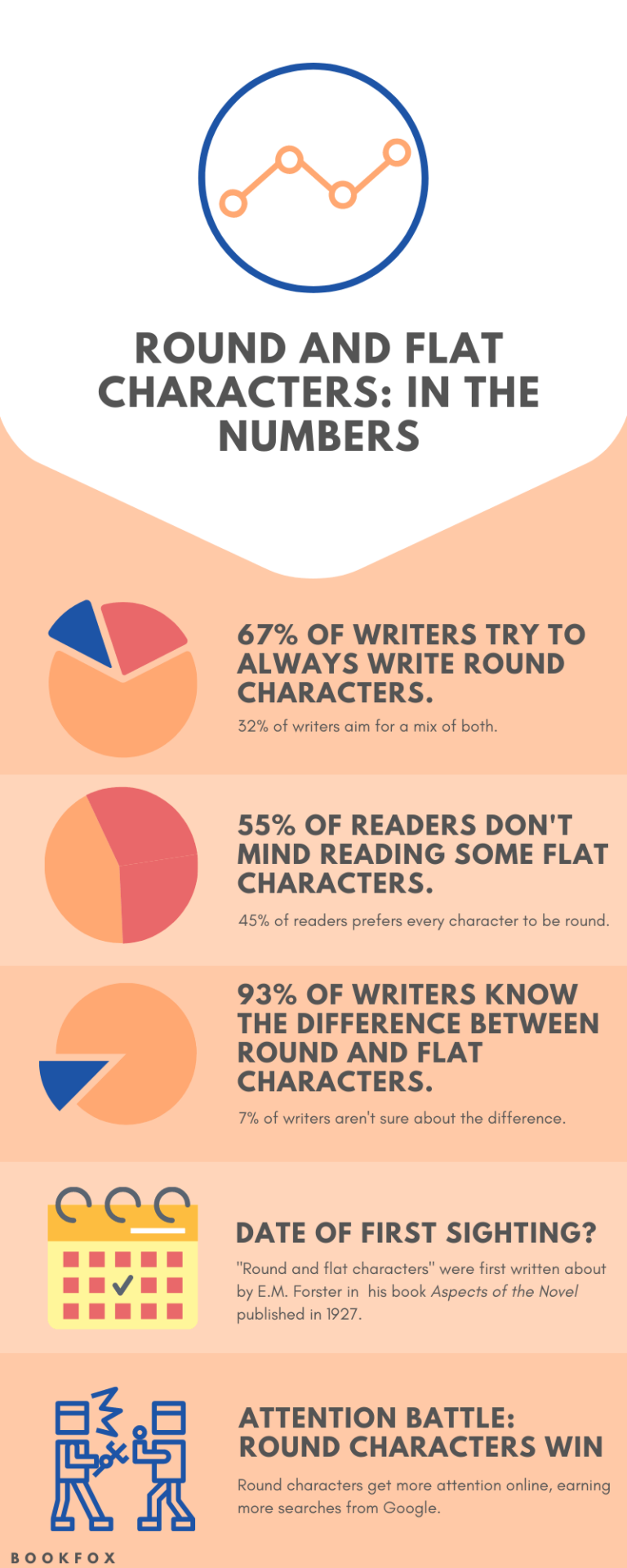
Round and Flat Characters A Guide to Writing Characters Bookfox
One way to create a captivating character is to craft a "round" character, one that is multi-dimensional and fully-realized. In contrast to "flat" characters, which are often one-dimensional and predictable, round characters have depth, nuance, and complexity that mimic real-life individuals. This depth comes from a character having conflicting.

What Is a Round Character? Definition & 25+ Examples
A round character feels 3-dimensional, deep, and has a lot of different sides to them. They have a background, values, fears and desires, all of which combine to make them complex. They are realistic. A flat character feels simplistic and schematic and only has a few emphasized traits to them.
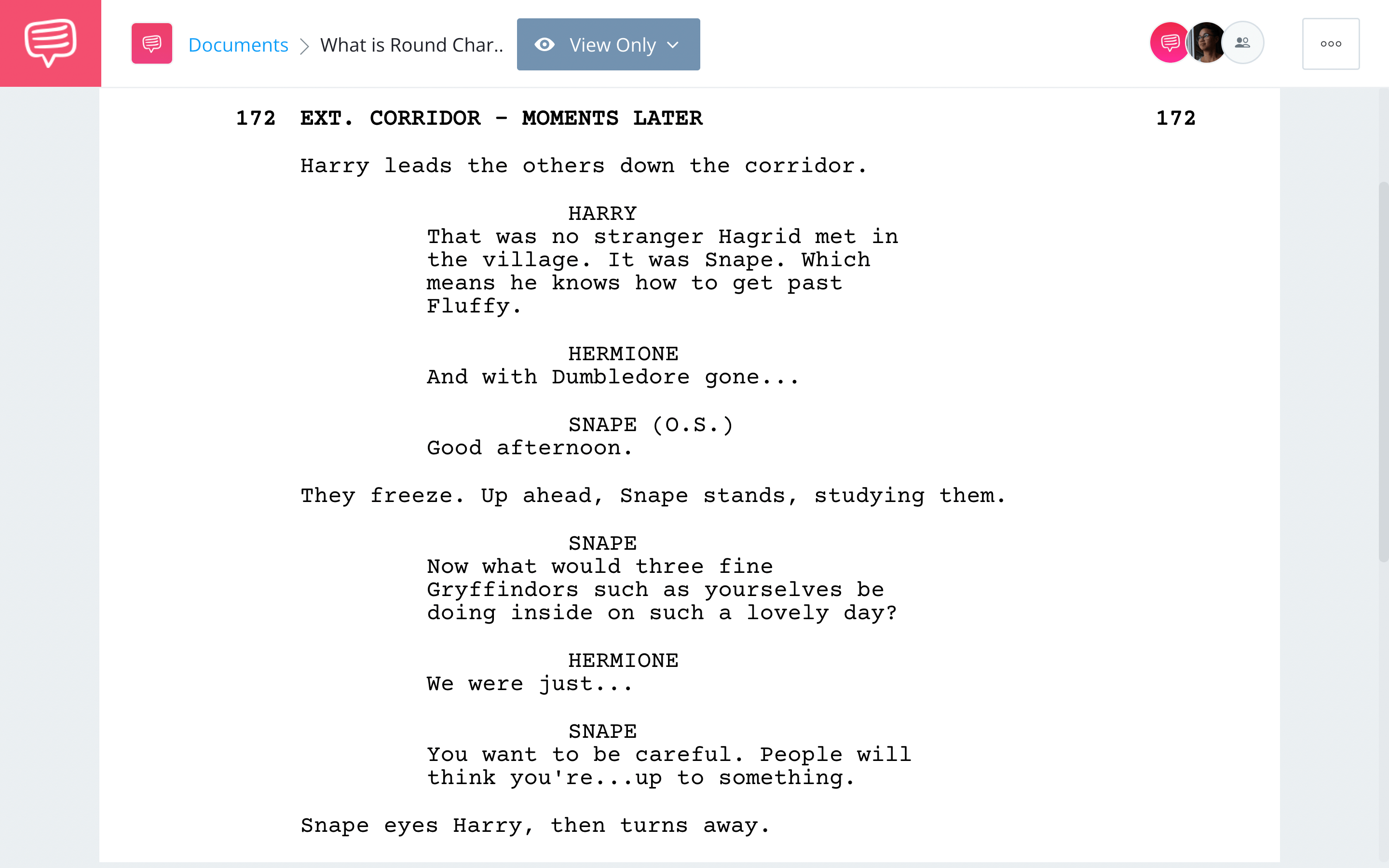
What is a Round Character — Definition, Examples for Writers
Characteristics of a Round Character. Relatable, often contradictory, and their personality develops over the course of the story. The Bride in Kill Bill, Shakespeare's Hamlet, and Celie in The Color Purple are classic examples. For a quick lesson on these two types of characters, let's give our attention to Senior Lecturer Gilad Elbom.

Round and Flat Characters lbpteach
A round character is a realistic, believable, and multilayered character in a work of fiction. These three-dimensional characters are flawed human beings with recognizable weaknesses and strengths, as well as relatable motivations and opportunities for growth. All protagonists should be round characters, because character complexity helps.
- Kappers Millingen Aan De Rijn
- Vrouw Klaagt Ouders Aan Voor Geboorte
- Activiteiten In La Roche En Ardenne
- Rosalie Van Breemen Alain Afflelou
- Cyclus Afval Kaag En Braassem
- Jeugdfonds Sport En Cultuur Amsterdam
- Lage Aard Bavel Dream Village
- G Class Mercedes Benz Suv
- سكك حديد مصر ويكيبيديا
- Waar Woont Van Der Vaart